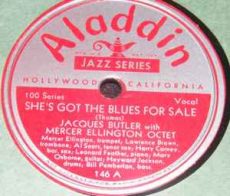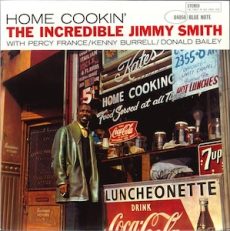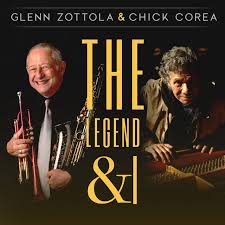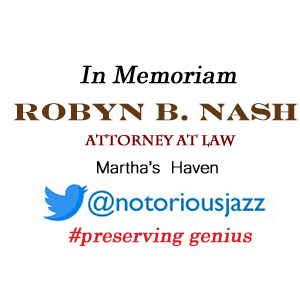
Jazz Poems
SNOW
I cannot help noticing how this slow Monk sol
seems to go somehow with the snow that is coming down this morninghow the notes and the space accompany
its easy falling on the geometry of the ground, on the flagstone path, the slanted roof, and the angles of the split rail fenceas if he had imagined a winter scene
as he sat at the piano late one night at the Five Spot playing “Ruby My Dear”.Then again, it’s the kind of song
that would go easily with rain or a tumult of leaves,and for that matter it’s a snow
that could attend an adagio for strings, the best of the Ronettes, or George Thorogood and the Destroyers.It falls so indifferently
into the spacious white parlor of the world, if I were sitting here reading in silence, reading the morning paper or reading Being and Nothingness not even letting the spoon touch the inside of the cup, I have a feeling the snow would ever go perfectly with that. BILLY COLLINSfrom Jazz Poems ~ Selected and Edited by Kevin Young
More Posts: book,classic,collectible,history,jazz,library,poet

Daily Dose Of Jazz…
August Rosenbaum was born on April 30, 1987 in Copenhagen, Denmark into a family of artists. He has had an eclectic and passionate vision since he first started learning to play the piano. As the only one at elementary school recitals who would perform Thelonious Monk, Wu Tang Clan and Erik Satie, the piano prodigy shows with equal conviction many sides of his talent.
Rosenbaum has won two Danish Music Awards for his composing, performed at the acclaimed Sónar Festival, and has been shortlisted for both the Nordic Music Prize and the National Danish Critics’ Award. He has wona Grammy for Best Alternative Album at the 2018 Danish Music Awards.
He is also known for collaborations with artists like Quadron, Rhye and MØ, Sonic Youth’s Kim Gordon and visual artist Jesper Just. He has been commissioned for works in film, theatre and performances at a.o. Palais De Tokyo, The Metropolitan Museum of Art, Brooklyn Academy of Music and The Royal Danish Ballet.
Pianist, composer and record producer August Rosenbaum continues to explore and record music.
More Posts: bandleader,composer,history,instrumental,jazz,music,piano,record producer

Daily Dose Of Jazz…
Jacques Butler was born on April 29, 1909 in Washington, D.C. but didn’t pick up the trumpet until his late teens. He began playing professionally with Cliff Jackson and Horace Henderson in New York City, then joined Marion Hardy’s Alabamians in 1931 for a year.
Leading his own ensemble in New York and touring from 1934-1935, Jacques also made recordings with Willie Bryant before relocating to Europe in 1936, where the two performed together until 1939. During that period he played with Frank “Big Boy” Goudie as well as with his own bands. He would tour Scandinavia before WWII and in 1940 he became well known in the Norwegian jazz community, and while visiting Oslo he recorded one 78 rpm. Returning to New York City that same year he played and recorded with Mercer Ellington, Art Hodes, Mezz Mezzrow, and Bingie Madison.
After a brief stay in Toronto he moved back to Europe in 1950, remaining there until 1968 as a regular at the La Cigale club in Paris, France. He appeared in the 1961 Paul Newman/Sidney Poitier film Paris Blues. In the 1970s he came home to the States and was seen working often in New York City, as a sideman with Clyde Bernhardt among others, and in the studio.
Trumpeter and vocalist Jacques Butler, who was sometimes listed as Jack, died in 2003. The date of his death is unknown.
More Posts: bandleader,history,instrumental,jazz,music,trumpet,vocal

Requisites
Home Cookin’ ~ Jimmy Smith | By Eddie Carter
I’d had a really long week and wanted to hear some organ jazz when I came across a title I always enjoyed but hadn’t listened to in a while. Jimmy Smith provides the recipe for seven courses of hard bop and soul-jazz with a side of the blues in Home Cookin’ (Blue Note BLP 4050/BST 84050). It’s a delicious quartet meal of pure organ bliss taken from three different sessions that hit the stores in 1961. Jimmy is joined by Percy France (tracks: A1, A4, B1, B2) on tenor sax, Kenny Burrell on guitar, and Donald Bailey on drums. My copy is the 1992 Toshiba EMI Japanese Stereo reissue sharing the original catalog number.
Side One opens with See See Rider by Gertrude “Ma” Rainey and Lena Arant. Jimmy and the trio introduce the theme at a slow tempo. Kenny has the first spot and swings lightly to the leader’s fat bass lines and Donald’s subtle brushwork. Percy follows with a down-home reading, and then Jimmy is equally elegant in a short solo ahead of the song’s finale. Sugar Hill by Kenny Burrell is dedicated to an area of Harlem and picks up the pace significantly as the composer leads Smith and Bailey through the melody. Kenny gets things going with a lively lead solo, and then Jimmy comes in for a spirited statement that moves along nicely. Burrell adds a few more comments preceding the reprise and slow fadeout.
I Got A Woman by Ray Charles would become a big hit for Jimmy McGriff a year later. Smith and company offer a change of pace from that swinger with a medium groove featuring Jimmy in the solo spotlight. The organist’s soulful presentation is a danceable treat until the threesome reprises the ending theme into a slow dissolve. Messin’ Around by Jimmy Smith brings back France to the foursome for the medium melody. Burrell is up first again with a sparkling statement. France puts a lot of heart and emotion into the following reading, then Smith’s short solo leads back to the quartet’s theme restatement and fade out.
Side Two begins with an introduction to a lovely lady named Gracie by Jimmy Smith. The quartet’s leisurely theme sets the tone for Percy’s contagious opening statement. Kenny skillfully constructs the second solo, and then Jimmy delivers one of his smoothest readings preceding the out-chorus. Come On Baby by Kenny Burrell is a solid blues that grabs the listener from the start of Smith’s melody and informal, easy opening interpretation. France steps up next with an excellent example of his superb tone quality. Burrell enters the picture next for a brief presentation before Jimmy adds a few last thoughts until the slow fade into nothingness.
Jimmy’s Motoring Along is the album’s closing number and the final trio track. The beat shifts upward for the melody. Kenny gets his message across in the lead solo, and Jimmy is a joy to listen to in the closer. Donald keeps the excitement in the beat going until the theme’s closing chorus and the trio’s slow exit. Alfred Lion produced Home Cookin’, and Rudy Van Gelder was the man behind the dials. The sound quality is good but not great, and the reason is the same issue I had with Hootin’ ‘n Tootin’ and Open House. The microphone placement for Jimmy’s organ has a level of distortion that is particularly noticeable on every track but not as bad on Come On Baby.
The front and rear covers are both laminated, and the record is incredibly quiet until the music starts. That aside, the good news is I enjoyed the music, particularly Percy France who I was unaware of, but pleasantly surprised with his playing because he reminded me of Stanley Turrentine. Burrell and Bailey are as solid a rhythm section as anyone could have, and they’ve collaborated with Jimmy on four other albums: Back At The Chicken Shack, Houseparty, Midnight Special, and The Sermon. If you’re a fan of hard bop, soul-jazz, or Jimmy Smith, I hope you will check out Home Cookin’ on your next record shop visit. It’s a tasty musical meal I’m sure you won’t regret adding to your library!
~ Back At The Chicken Shack (Blue Note BLP 4117/BST 84117), Hootin’ ‘n Tootin’ (Blue Note BLP 4094/BST 84094), Houseparty (Blue Note BLP 4002/BST 84002), Midnight Special (Blue Note BLP 4078/BST 84078), Open House (Blue Note BLP 4269/BST 84269), The Sermon (Blue Note BLP 4011/BST 84011) – Source: Discogs.com
~ See See Rider – Source: Wikipedia.org © 2024 by Edward Thomas Carter
More Posts: choice,classic,collectible,collector,history,instrumental,jazz,music,organ

Daily Dose Of Jazz…
Glenn Paul Zottola was born in Port Chester, New York on April 28, 1947. He started playing jazz professionally in 1960.
Glenn is known for his work with Lionel Hampton, Benny Goodman, and Bob Wilber, and has accompanied a broad range of vocalists, including Mel Tormé, Frank Sinatra, Peggy Lee, Ella Fitzgerald, and Joe Williams.
He has recorded over 50 albums with Butch Miles, Bob Wilber, Mousey Alexander, Steve Allen, Phil Bodner, George Kelly, Peggy Lee, George Masso, George Masso, and Maxine Sullivan, among numerous others.
In 1988, was a featured soloist at the 50th anniversary of Benny Goodman’s Carnegie Hall Concert. In 1995, Zottola was bandleader on the Suzanne Somers daytime TV talk show at Universal Studios.
Trumpeter and saxophonist Glenn Zottola, who has recorded twenty-two albums as a leader, continues to perform and record.
More Posts: bandleader,history,instrumental,jazz,music,saxophone,trumpet




